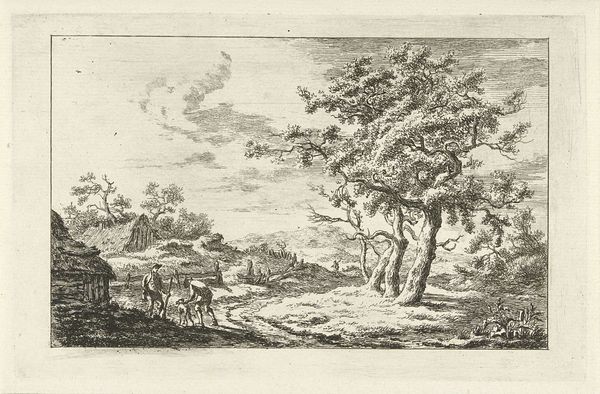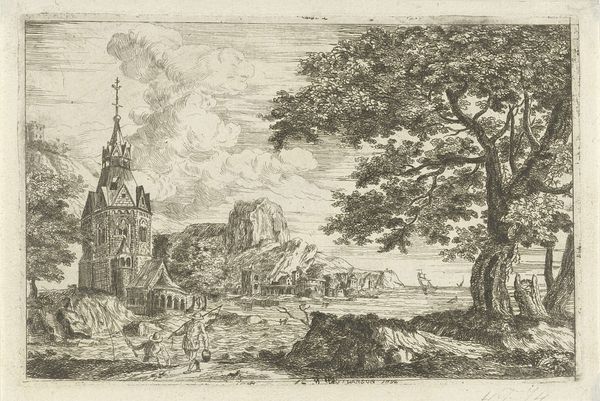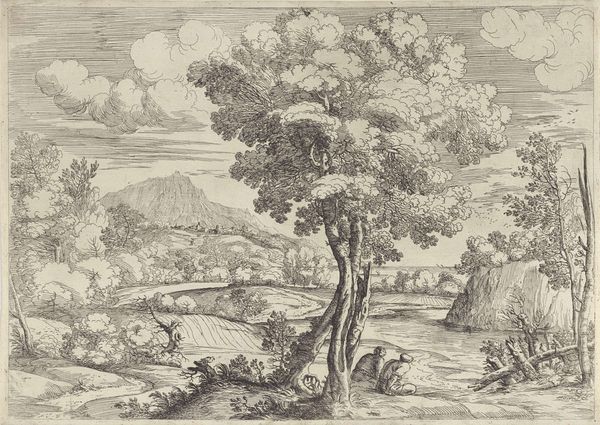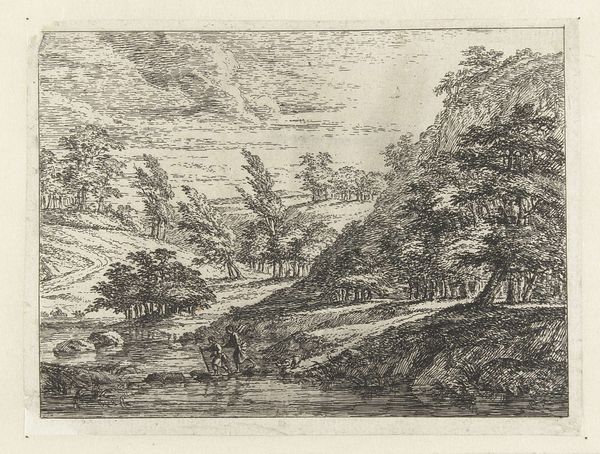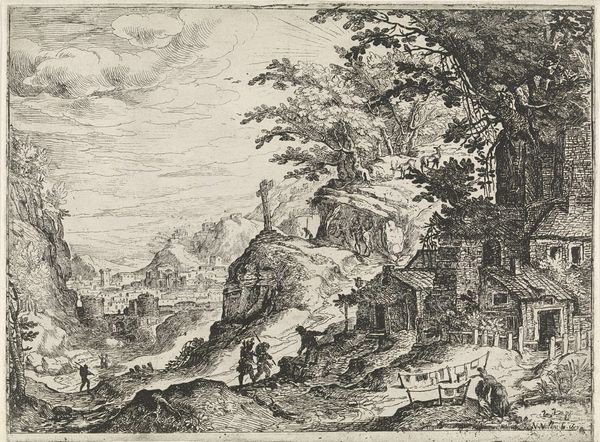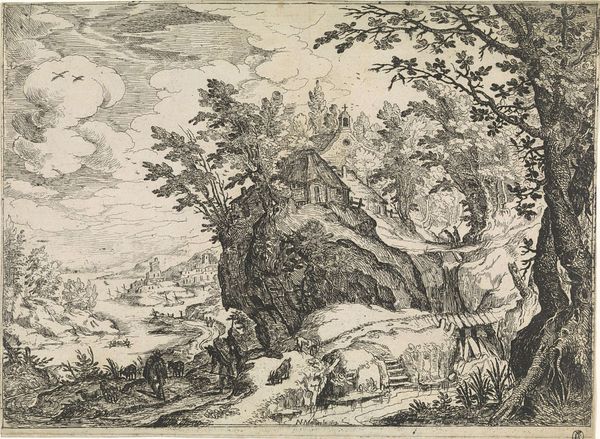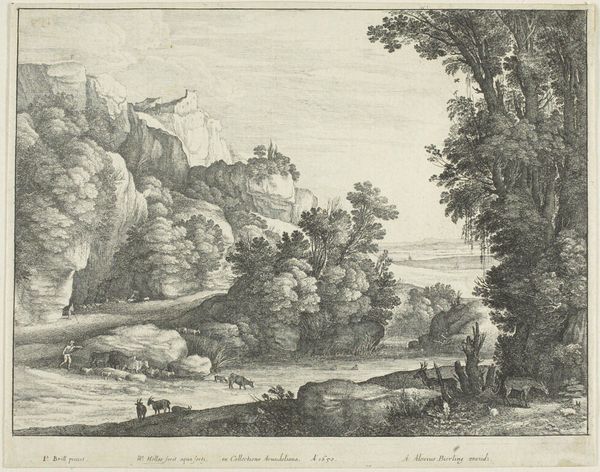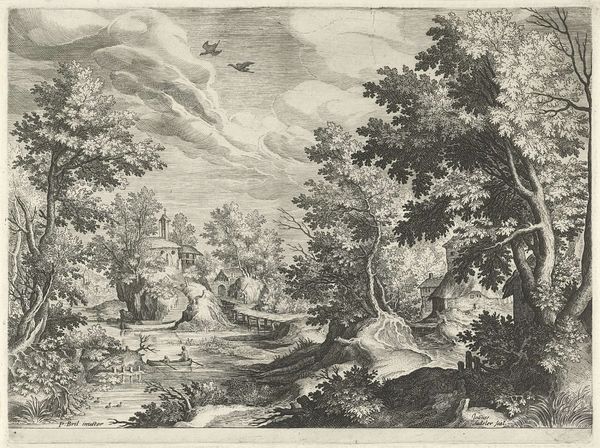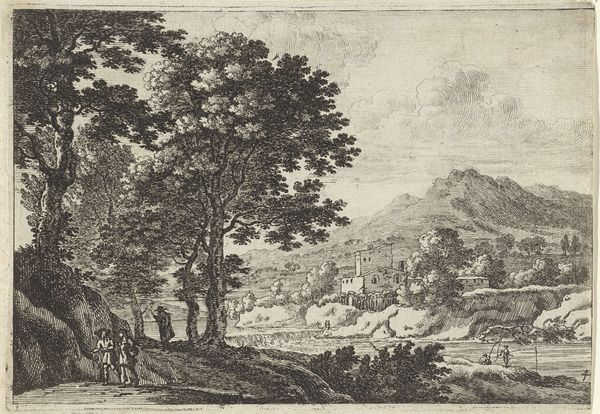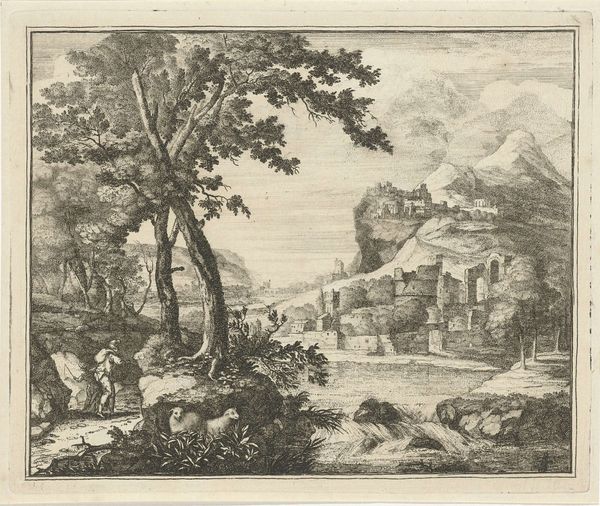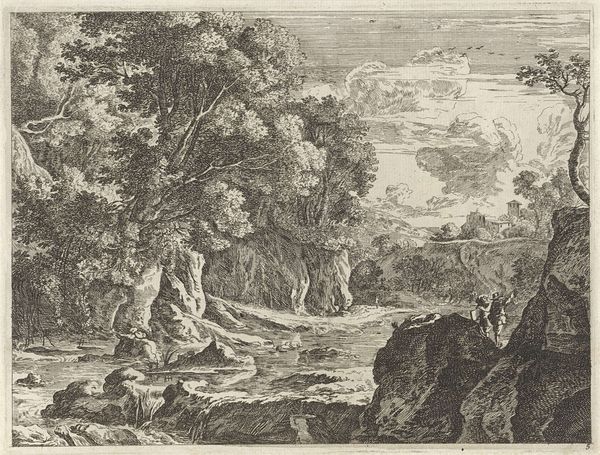
print, etching, engraving
#
neoclacissism
# print
#
etching
#
landscape
#
cityscape
#
engraving
Dimensions: height 104 mm, width 145 mm
Copyright: Rijks Museum: Open Domain
Editor: This etching and engraving from 1792, titled "Verdedigingsmuur bij een kust," by Jean Joseph Hanson depicts a fortified coast. I'm struck by the contrast between the serene landscape and the implied threat of defense. What layers do you see within this landscape, thinking about its historical moment? Curator: It's insightful to note that tension, particularly considering the piece was created during a time of significant upheaval. While the work adheres to neoclassical ideals through the focus on structure and order, consider that this structure is, fundamentally, a defense. How does it make you feel knowing that the Age of Revolutions began just three years earlier? Editor: That context shifts my perception. I see how the idealized landscape almost masks the undercurrent of potential conflict, highlighting anxieties about national identity and borders at the time. It seems like the very concept of a picturesque scene gets questioned. What kind of dialogue was the artist hoping to create with his viewers, and how does the artistic style influence that communication? Curator: Exactly! Hanson is operating in a period grappling with Enlightenment ideals of progress and reason set against very real social and political instability. The meticulous rendering of the wall invites a critical examination of power and control. Do you notice any social classes represented in the work? How might this factor into its political dimensions? Editor: I notice people casually walking. The elite maybe saw it as beautiful, reassuring evidence of power. But perhaps people living under constant fear of invasion saw something different? It makes you think about whose perspective is privileged in this depiction. Curator: Precisely. By considering these dynamics, the landscape evolves beyond aesthetics to become a document reflecting societal complexities and unequal experiences. This layered reading underscores how art engages with politics and daily lives in the late 18th century. Editor: I now understand how an apparently straightforward image invites dialogue regarding identity, power, and even class conflict of the period, adding richness to this piece. Thanks so much for broadening my horizons.
Comments
No comments
Be the first to comment and join the conversation on the ultimate creative platform.

